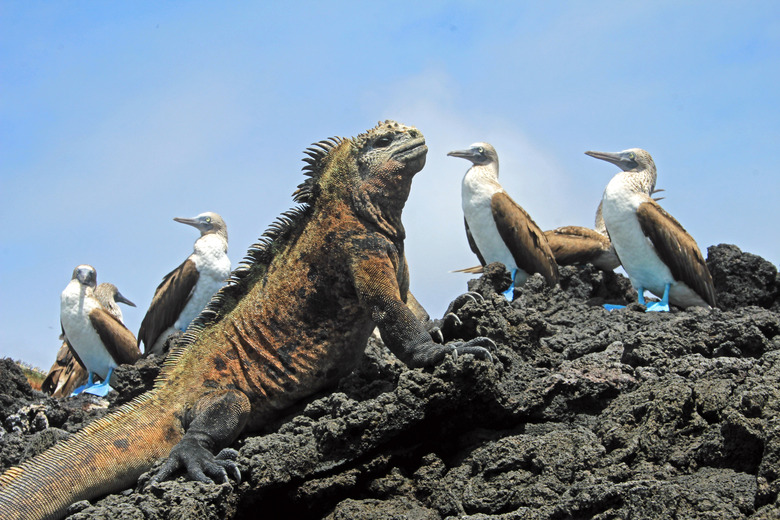Compare And Contrast Artificial And Natural Selection
Both natural and artificial selection refer to processes that determine which genetic traits pass from one generation to the next. During natural selection, species survival and reproduction determine those traits. Artificial selection places humans in control of choosing which traits show up in future generations, and which ones do not. While humans may artificially enhance or repress an organism's genetic traits through selective breeding, nature concerns itself with traits that allow advantages to a species' ability to mate and survive.
When Artificial Selection Goes Wrong
When Artificial Selection Goes Wrong
People have experimented with how they could selectively breed organisms in order to boost traits beneficial to mankind, even if those traits did not give a species a mating or survival advantage. An example of this would be in the current breeding of bulldogs.They are being selected by man to have large heads, which requires them to be born by cesarean section. This would obviously not be a trait selected for in nature, as it would decrease species fitness. Artificial selection actually can reduce the natural variation of traits in a population.
How Natural Selection Determines Traits
How Natural Selection Determines Traits
While natural selection itself does not choose the genetic traits future generations inherit, the process passes along those traits that benefit a species' fitness for survival. If a giraffe with a slightly longer neck is able to reach food in high treetops when supplies are low, he or she will have a greater chance to survive and reproduce than one with a shorter neck. The shorter necked giraffes may die that season or not have the energy resources to produce offspring.Therefore, the trait of a longer neck may be passed on to the offspring and the gene pool of giraffe will gradually have more individuals with long necks. In order for natural selection to operate there must be a variation in traits in the population.
Dangers of Artificial Selection
Dangers of Artificial Selection
When man selects organisms to breed for specific traits, many times he selects related members to enhance that trait. This inbreeding can cause an expression of dangerous genes. An example is the inbreeding that occurred during ancient times and more recently with European royals. To preserve royal lineages, relatives were often allowed to marry and produce children. Many of these families had children who suffered from genetic disorders, such as hemophilia.
Population Size and Natural Selection
Population Size and Natural Selection
Inbreeding can occur in natural selection as well, particularly when populations are small. Wild cheetah populations have diminished and are located in small geographic pockets. This results in low levels of genetic diversity. Natural selection will still select traits that enhance fitness, but due to this type of forced inbreeding, even natural populations are faced with decreased variation in traits. This concerns scientists and conservationists because the cheetahs could lack the diversity needed to survive disease outbreaks or rapid environmental changes.
Cite This Article
MLA
Schab, Terri. "Compare And Contrast Artificial And Natural Selection" sciencing.com, https://www.sciencing.com/compare-contrast-artificial-natural-selection-16711/. 9 March 2018.
APA
Schab, Terri. (2018, March 9). Compare And Contrast Artificial And Natural Selection. sciencing.com. Retrieved from https://www.sciencing.com/compare-contrast-artificial-natural-selection-16711/
Chicago
Schab, Terri. Compare And Contrast Artificial And Natural Selection last modified August 30, 2022. https://www.sciencing.com/compare-contrast-artificial-natural-selection-16711/
